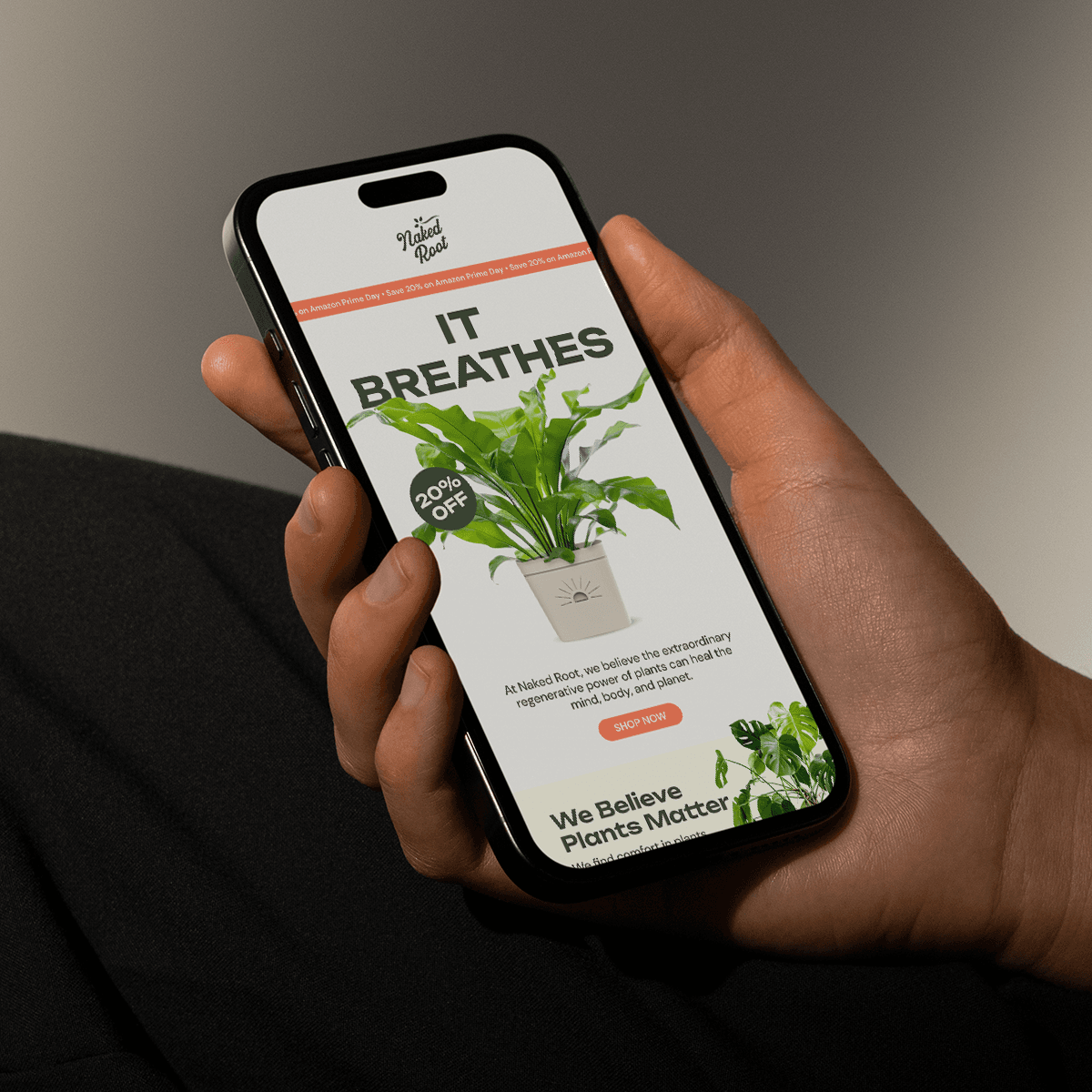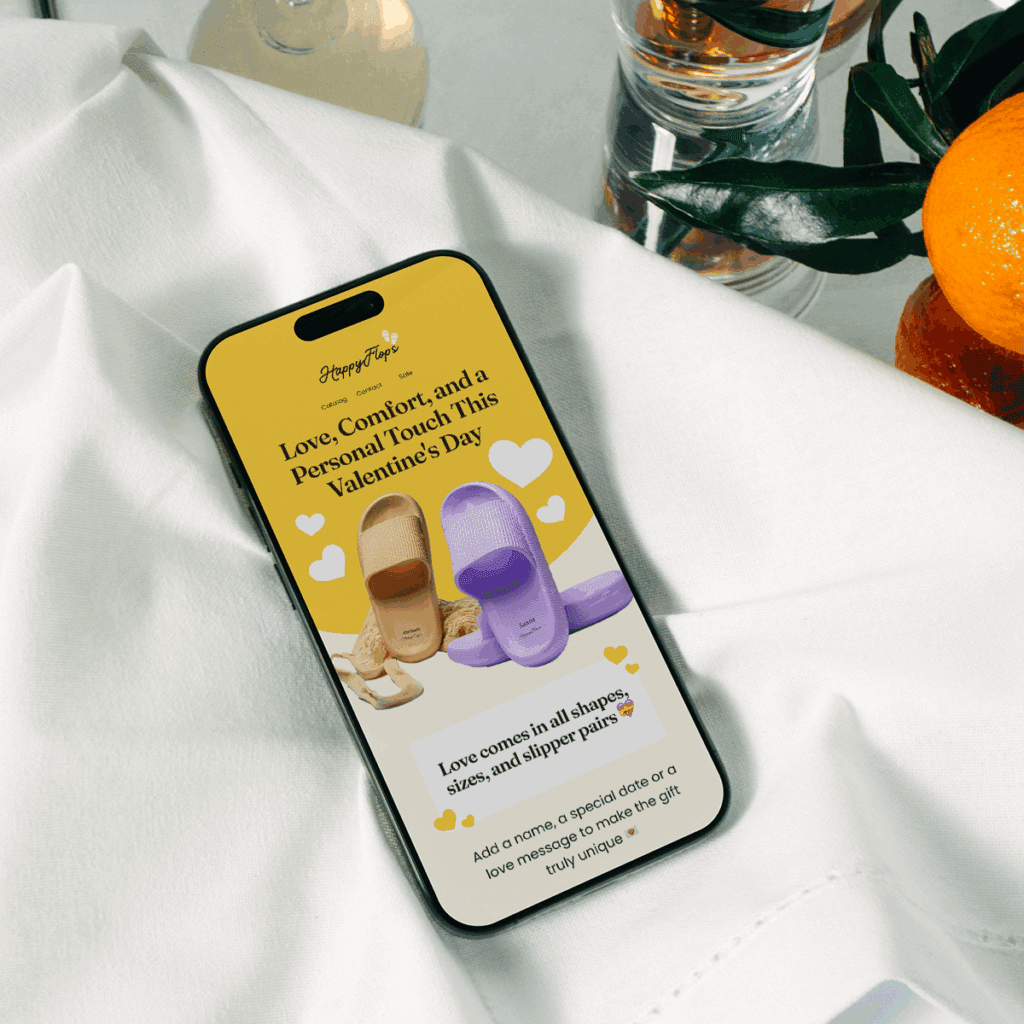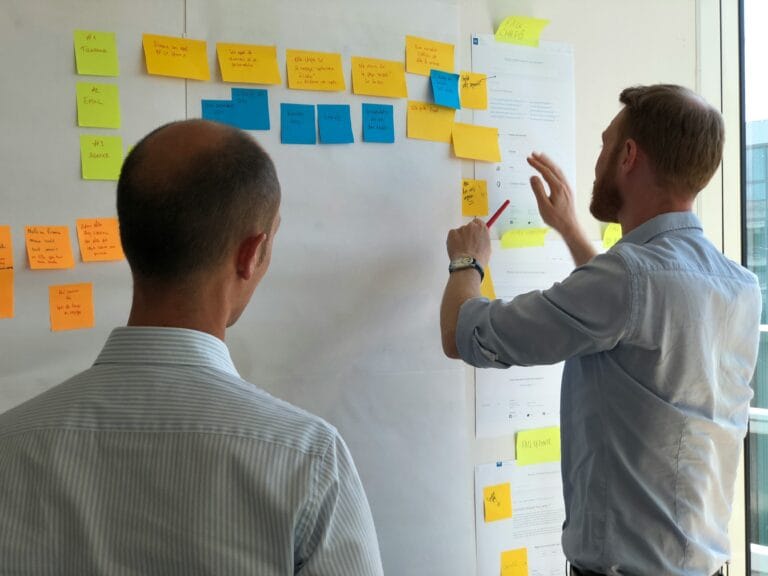Ever feel like your email list is just chilling there, not really doing anything for your business? You’re not alone. I used to think email was just what you used for blasting out discounts or the occasional “hey, we miss you!”—until I figured out how game-changing lead nurturing can be. Turns out, it’s one of the best ways to convert lukewarm browsers into seriously loyal customers… without pouring even more cash into ads that barely move the needle.
Here’s the deal: competition in eCommerce is wild right now. Customer acquisition costs are climbing, and if we’re just hoping people will magically come back and buy, well, good luck. The smartest brands are taking a different tack. They’ve made email their MVP—carefully guiding every lead with the right content at the right moment. And no, this isn’t about spamming inboxes or running the same old drip series you set up two years ago. We’re talking about a thoughtful, strategic approach that actually feels personal and relevant. The payoff? Higher conversions, happier customers, and way more long-term value flowing into your store.
If you’re ready to use email for more than just “newsletters” or abandoned cart nags, keep reading. I’ll show you exactly how lead nurturing works in eCommerce, why it’s so effective, and which email strategies can turn any decent contact list into a gold mine—yes, I’ve seen it happen firsthand.
Introduction to Lead Nurturing in eCommerce

Let’s just say it right up front: if you’re running an eCommerce brand and you’re not focused on lead nurturing, you’re probably burning money. Jokes aside, most folks don’t check out your site, fall in love, and buy on the spot. They browse, compare, get distracted, and most slip away unless you keep the conversation going. That’s where lead nurturing comes in. In the eCommerce world, it’s the process of guiding those “maybe” shoppers, people who showed some interest but didn’t buy yet, into real, paying customers.
Why’s this so important? Well, the flood of competition is wild these days. There’s always another store just a few clicks away, probably selling something that looks like what you offer. Not to mention, ad costs just keep climbing. You pour more budget in, but each click seems to get pricier. So if you don’t start working smarter, not just harder, you end up overspending on traffic that doesn’t convert. That’s a tough spot to be in for any shop owner or marketer trying to scale and hit targets.
Lead nurturing is all about building trust and relationships over time. You’re not just blasting out discount codes and hoping for the best. A strong lead-nurturing strategy keeps your brand top-of-mind and nudges leads forward, bit by bit, with helpful content and timely touchpoints. Think personalized emails, relevant product recommendations, or even a quick DM when someone abandons their cart. You’re basically showing, “Hey, we get what you need, and we’re here when you’re ready.”
What you get out of it is more than just quick sales. People are way more likely to buy if they feel understood. Nurtured leads actually tend to make bigger purchases and stick around for repeat orders. That means a higher customer lifetime value instead of just chasing one-off buys. And since acquiring new customers is getting more expensive all the time, making the most of the folks already in your funnel is where the real profit lives.
For a lot of eCommerce businesses I talk to, making the shift from scattershot marketing to intentional lead nurturing is when things actually click. Instead of letting potential customers drift away forever, you build a real funnel, with multiple opportunities to win them over without being pushy. There’s data to back it up, too. Brands with a strong lead-nurturing process see more conversions at a lower cost, and their customers are far more loyal.
So, bottom line: lead nurturing is about turning casual interest into lasting relationships, it’s the difference between chasing sales and actually building a business that grows. And if you’re serious about getting more out of every lead, smarter nurturing should be at the top of your to-do list.
The Power of Email Marketing in Lead Nurturing
If you’re looking for a channel that’s built for lead nurturing, email is your best friend. Seriously, nothing in your toolkit makes it easier to keep in touch with potential customers right where they actually pay attention, in their inbox. Most folks hear “email marketing” and think newsletters or the odd offer, but this thing has evolved like crazy. Today, it’s not just about pushing out updates and hoping for the best. It’s about building real, ongoing conversations that help shoppers trust you and eventually move them closer to a purchase.
Let’s face it, hardly anyone buys the first time they visit your site. People need info, reminders, even a nudge or two. With email, you can offer all of that: a helpful guide, a cart reminder, a little social proof, or just something fun or useful related to their interests. Think about it like warming up a cold lead before making the big ask. Instead of “Hey, buy now!” your message sounds more like, “Hey, saw you checking us out… is there something you need?” It works because it’s personal and timely.
And don’t underestimate how sophisticated things have gotten. We’re not in the era of batch-and-blast anymore. Most modern email systems let you segment your list, automate entire journeys based on what people actually do, and get super creative with personalization. A lead looks at eco-friendly planters? They get tips for plant parents and a gentle intro to your hero product. They add something to the cart and leave? A friendly “Hey, your plant’s still waiting for its new home!” reminder pops up an hour later. That’s real engagement, and it’s exactly how brands like Naked Root and HappyFresh (working with Blikket) saw jaw-dropping lifts in both engagement and revenue, sometimes up to 500% growth in just a month.
What really makes email sing for lead nurturing is how easy it is to adapt to each stage of the customer journey. New subscriber? Roll out the welcome carpet and set expectations. Long-time lurker? Remind them what sets you apart, no hard sales pitch needed. Nearly everyone’s just looking for that one thing, a sign that your brand “gets it.” With a solid email setup, you can deliver those signs over and over, in just the right moment.
Let’s not ignore the business angle either. Of all the channels out there, email consistently brings in one of the highest ROIs in marketing. And it’s not just about raw conversions. When someone feels like you actually remember them, they stick around longer, trust you more, and buy bigger. Over time, that makes lead nurturing through email one of the most dependable ways to build not just revenue, but deep brand loyalty, without having to chase cold traffic every month. Email isn’t going anywhere, and as long as you keep the focus on helping leads (not just selling), results will follow.
Designing Effective Email Nurturing Campaigns

If there’s a “secret sauce” for turning window-shoppers into loyal buyers in eCommerce, it’s designing email nurturing campaigns that actually speak to your leads. Good intentions aren’t enough; you need strategy and the right tools to build trust and conversions, not just send reminders. Here’s how I approach it, and how Blikket’s team dials these campaigns in for real results.
Start with Segmentation
This is the foundation. If you’re blasting the same email to every subscriber, you’re missing out. Segmentation splits your list into groups based on things like what folks browse, how often they shop, or where they are in your funnel. Say someone browsed travel bags but didn’t buy, put them in a sequence focused on travel tips, packing hacks, and maybe a gentle nudge about your best-sellers. Blikket gets super granular here, using behavior and purchase data, so your messages feel like they were hand-picked.
Personalization: Go Beyond “Hi, ”
Let’s be honest, “First name” personalization is table stakes now. What really moves the needle is making your emails feel like recommendations, not ads. Pull in their past browsing habits, order history, even personal milestones (birthday coupons, anyone?). At Blikket, we’ve seen clients get crazy-high engagement just by spotlighting the right product at the perfect time, one of our plant care clients used dynamic content to highlight care tips for the specific plant a lead viewed, not just general advice.
Nail the Timing
Ever get a “complete your purchase” email three days after you’ve already given up on a product? Timing matters. The trick is to send the right message while your brand is still fresh in their mind. After signing up, fire off a welcome. Cart abandoned? Don’t wait, get that reminder (ideally with a little incentive) out fast. The best nurturing sequences trigger off user actions, not arbitrary calendar days. Marketing automation tools make this almost effortless; set the rules, and let the system do the heavy lifting.
Automate Smartly, But Stay Human
Automation is your best friend, but it’s not about setting and forgetting. The idea is to scale what works, not make your emails sound robotic. Drip campaigns, behavior-triggered sends, abandoned cart flows, win-back emails, all of those can run automatically, but should still feel like you typed them yourself. Blikket’s approach layers in A/B testing and tweaks the journey based on real-world results. If a particular sequence flops, adjust copy, timing, or offers until you see those open and click rates climb.
Don’t Forget Relevancy
This ties it all together. Every email in your sequence needs a purpose: to answer a question, solve a problem, or provide value. Sprinkle in testimonials or real customer stories so leads know others like them have solved the same problems by buying from you. And don’t be afraid to address pain points or hesitations head-on. I always say, if you’re getting objections at checkout, answer them right in your nurture flow.
- Segment by behavior, interests, and stage in the buying journey
- Personalize with more than just a name, and show you get their actual needs
- Automate for speed and consistency, but review your flows regularly
- Send the right message at the right moment (especially after critical actions like cart abandonment)
- Continuously test, refine, and learn from your data
One thing I’ve seen with Blikket’s clients: brands that treat email nurturing as just another box to check rarely see big lifts. But when you have a relentless focus on sending the right email to the right lead at the right time, the results speak for themselves. Higher open rates, more conversions, and customers who stick around.
If all this sounds like a lot, start with just one or two flows and build from there. You’ll spot the difference pretty fast. Lead nurturing isn’t just a buzzword; it’s the back-end engine that keeps eCommerce growth sustainable.
For more inspiration and the nitty-gritty on automation (including tools and what actually works), I always suggest checking resources like LeadsBridge’s guide and William & Mary’s breakdown of best practices. These go deep into examples and the “why” behind each tactic.
Case Studies: Success Stories of Email Nurturing
When you think about the brands that make Lead Nurturing look easy, it’s always the same stories: big lifts in conversions, crazy engagement numbers, and customers who return again and again. Sounds good, right? Let’s walk through how a few eCommerce teams actually pulled this off with smart email nurturing sequences, no magic, just strategy and effort.
Naked Root: From Quiet Store to 500% Revenue Growth
I’ve got to mention Naked Root here. Before any big campaigns, they were basically a niche store with strong products, but conversions lagged. Once they kicked off targeted email nurturing (with some help from Blikket), the game changed fast. They combined personalized product recs, like care tips for each plant a shopper browsed, with timely abandoned cart nudges and segmented welcome flows. Instead of fading into the background, Naked Root saw revenue jump 500% in a month and hit $40K in sales. That’s not a typo. These weren’t just one-off sales, either. Their nurture emails helped plant parents stick around, order more, and tell their friends. Sometimes you just need a few strategic emails to nudge things along, and the results stack up quickly.

HappyFresh: Building Loyalty (and MRR) With Personalization
Subscription-focused brands especially love Lead Nurturing, and HappyFresh is a great example. Their home essentials used to rely on standard blasts, then they switched to tailored email flows that welcomed new signups, educated them about eco-friendly products, and offered subscriber-only perks. The result? Nearly 2,000 new subscribers in days, $30K in monthly recurring revenue, and an eye-popping 65% open rate. Follow-ups didn’t stop at the first order; ongoing nurture emails turned new faces into loyal fans, leading to an extra $70K in additional sales. It shows just how much people appreciate feeling like you “get them,” not just asking for another order every week.

Personalization, Timing, and Value: The Golden Combo
Let’s talk bigger picture: these results aren’t flukes. When brands dial in their Lead Nurturing, think segmentation, personalization, and consistent (but not overwhelming) timing, every metric worth caring about improves. There’s a case study floating around about a sustainable outdoor apparel brand that saw a 25% increase in open rates and a 10% jump in actual conversions after shifting to this model. What worked? Segmented lists, content people actually wanted (hello, eco-friendly tips and behind-the-scenes stories), and nonstop A/B testing. Little tweaks like personalizing by browsing behavior or delivering a killer CTA made all the difference.
- Open rates jumped 25%.
- Click-through rates up 15%.
- Conversion rates up 10%.
No rocket science here. Thoughtful, value-driven emails that speak directly to shoppers simply build better results, loyalty, bigger baskets, and way less churn.
Your Turn: What Can You Take From These Wins?
So, what do these stories have in common? None relied on high-pressure sales tricks or endless discounting. It’s about showing you care, sending the right message at the right time, and treating leads like real people. If you find your own email nurture flows feel flat, maybe it’s time to experiment with segmentation, revisit your content, and keep testing until you see the lifts for yourself. Trust me, once you get Lead Nurturing right, you’re not just watching numbers go up, you’re building a community of buyers who actually come back for more.
Maximizing Customer Lifetime Value Through Email

Let’s get real about why nurturing doesn’t stop once someone hands you their card. If you really want to boost Customer Lifetime Value, email needs to shift gears after that first sale. The numbers back it up: your returning customers are so much more likely to buy again, and they’re usually the group fueling most of your sales. It’s not rare to see 80% of revenue coming from a core 20% of repeat buyers. That’s why lead nurturing through smart, ongoing emails is really where the magic happens.
Now, you’ve probably sent plenty of post-purchase emails that feel a bit like receipts. That’s a missed opportunity. This is where you should be building trust, making folks feel good about what they just bought, and giving them reasons to stick around. The post-purchase flow isn’t just a “thank you note.” It’s a series, welcome emails, shipping updates, support, cross-sells, loyalty nudges, review requests, all designed to make customers feel like you remember them and want them back.
Once you’ve got those basics down, the game is all about maintaining engagement. That’s where lifecycle email strategies make a difference. You’re keeping your brand in their back pocket through every stage: reminding them of what they love, promoting exclusive perks, offering insider content, or maybe a little birthday surprise. Personalization is king here. When your emails call out their actual interests or purchase history, think “Hey, how’s your new planter working out?” or “Based on your last order, you’ll love this limited edition.” Customers notice, and they buy deeper, not just once. Lifecycle email strategies are pivotal in this approach.
This isn’t theoretical, either. Take Blikket’s approach. Some of our best-performing flows for plant care and subscription brands include things like an immediate order thank-you, a second email with plant care tips, a follow-up review incentive, and special sneak-peeks for loyal shoppers. That ongoing touch turns new fans into real advocates. When you see customers sharing those experiences on socials, leaving reviews, or referring friends, yep, that’s lead nurturing at work. Suddenly, one happy buyer brings in a few more and keeps the revenue flowing long after their first cart.
If you want specifics on how to boost Customer Lifetime Value with email, here’s what actually works:
- Automate timely post-purchase emails: Start with gratitude, then check in with support, tips, and FAQ links before they even think about returning for help.
- Personalized product recommendations: Refer back to their last purchase or browsing behavior. “People who bought X also loved Y” is still a classic for a reason.
- Loyalty and referral hooks: Don’t be shy, everyone likes a VIP invite or a “refer a friend” bonus.
- Collect and highlight reviews: Post-purchase is the prime time to grab feedback and then turn that user-generated content into social proof for your next buyer.
- Occasional re-engagement campaigns: If they’ve gone quiet, show up with a personalized offer or some exciting new content. Bring ‘em back before they forget you exist.
The best part? This kind of lead nurturing isn’t about overwhelming your customers or blasting meaningless offers every week. It’s about showing up at the right moments, with something that makes their life a bit better or a little more fun. And when you do that well, your average order values creep up, repeat purchase rates increase, and suddenly you’re not just running an eCommerce brand, you’re running a community of fans who keep coming back, buying more, and spreading the word.
Ignore the whole “set it and forget it” mindset. Customer Lifetime Value grows when you actually put in the work to keep those relationships warm, relevant, and valuable, one great email at a time.
What This Means for Your Store, Right Now
So, if you’re still running those old-school blasts or hoping leads will just “come around,” you’re leaving a lot on the table. Lead nurturing is about moving beyond the basics, actually connecting with your audience, and being there for them as more than a sales pitch. When done right, a good nurturing sequence doesn’t just lift your numbers, it changes the way people see your brand and feel about doing business with you.
- Map out your emails so each one feels personal and helpful, not just another promo.
- Use what you know about your customers to send the right message, not just the loudest one.
- Test, tweak, and listen; your audience will tell you what they want when you pay attention.
- Make “Lead Nurturing” part of your weekly routine, not a one-off campaign you set and forget.
Look, the brands that win in eCommerce don’t just shout louder. They build trust and community with every email, turning one-time buyers into fans who stick around and tell their friends. Why not start treating every new lead as the beginning of that kind of relationship? What’s holding you back from making lead nurturing a priority this week?










